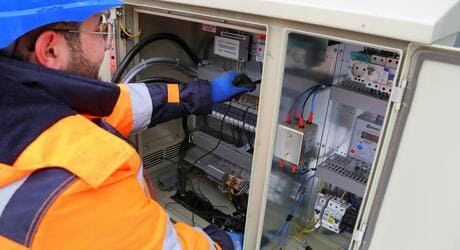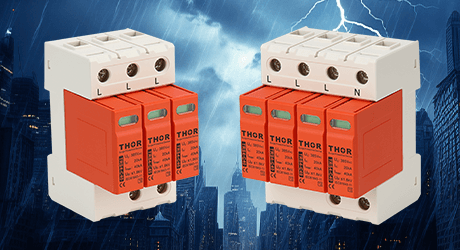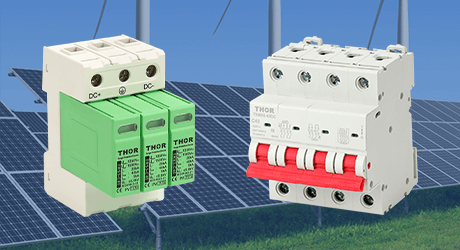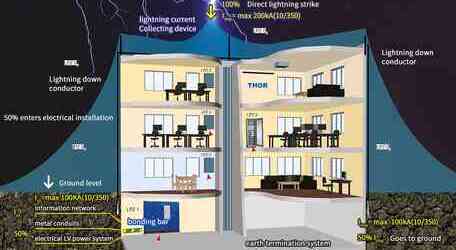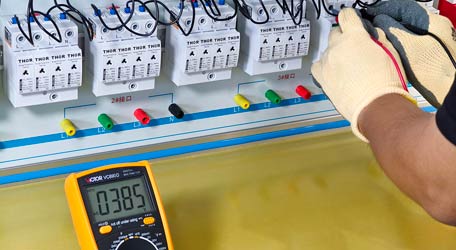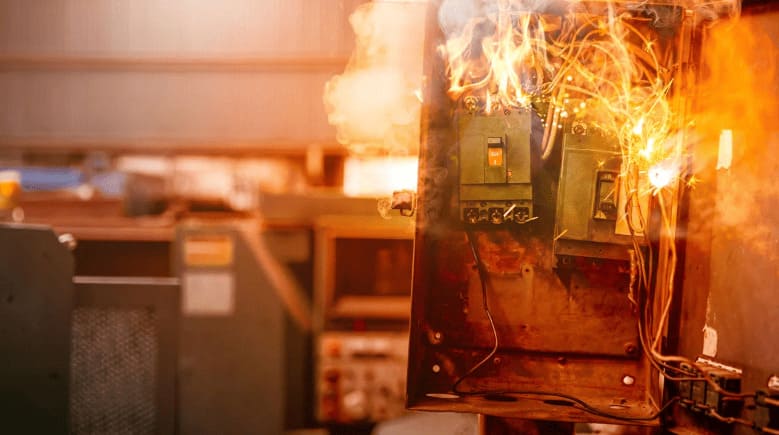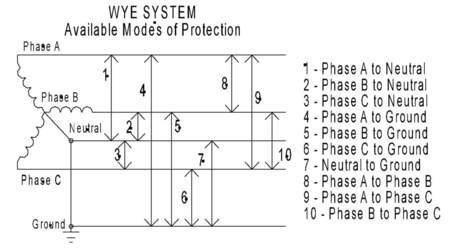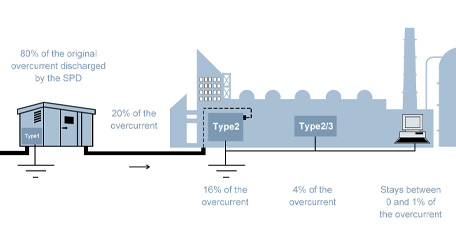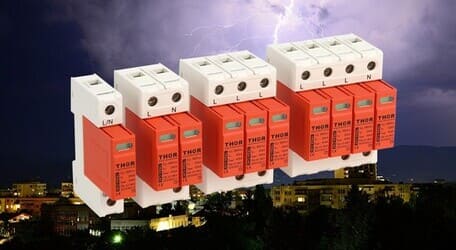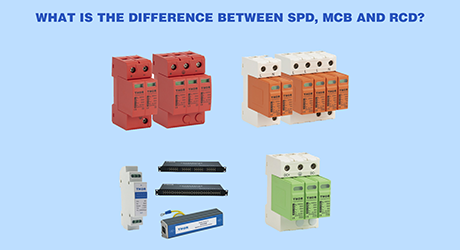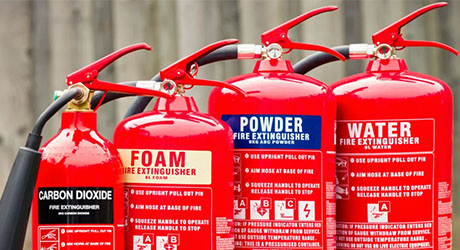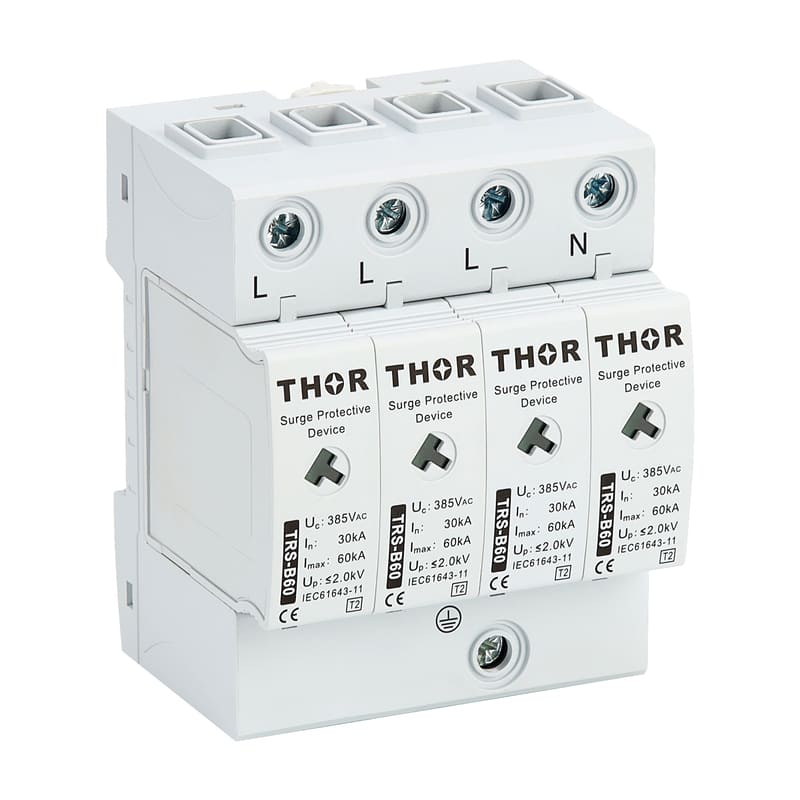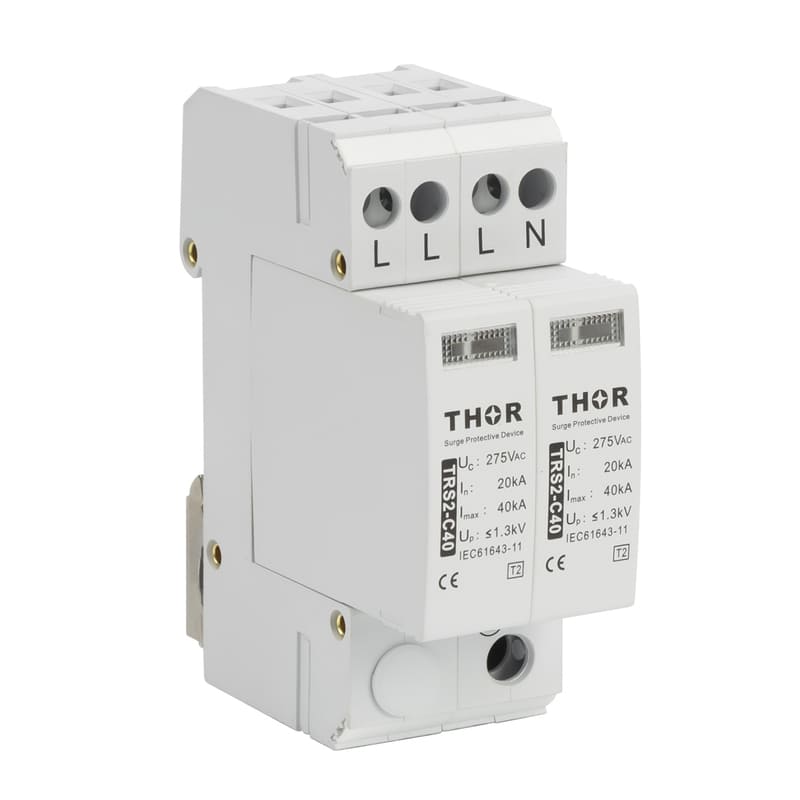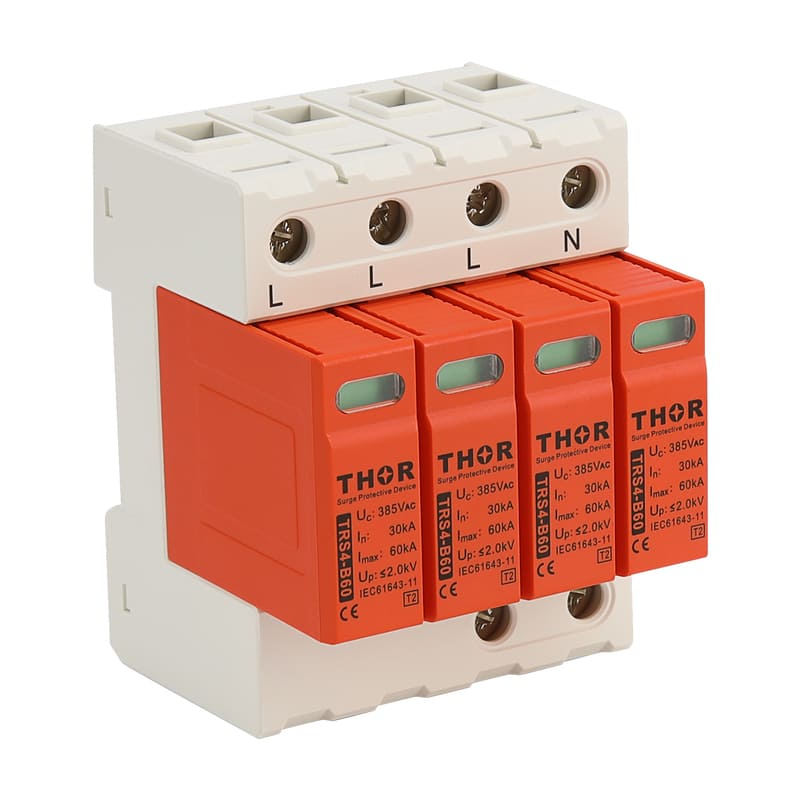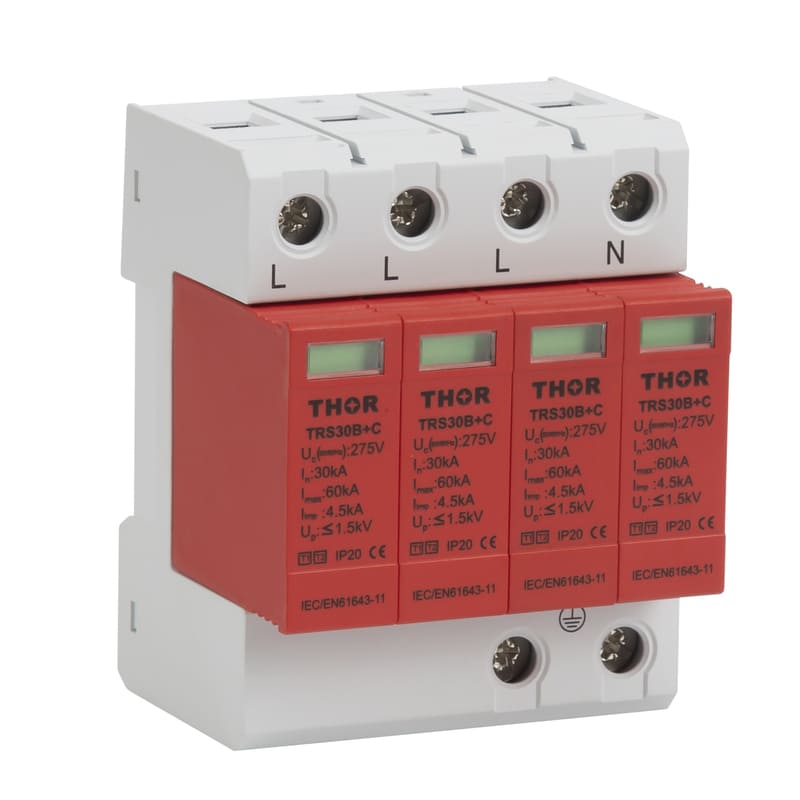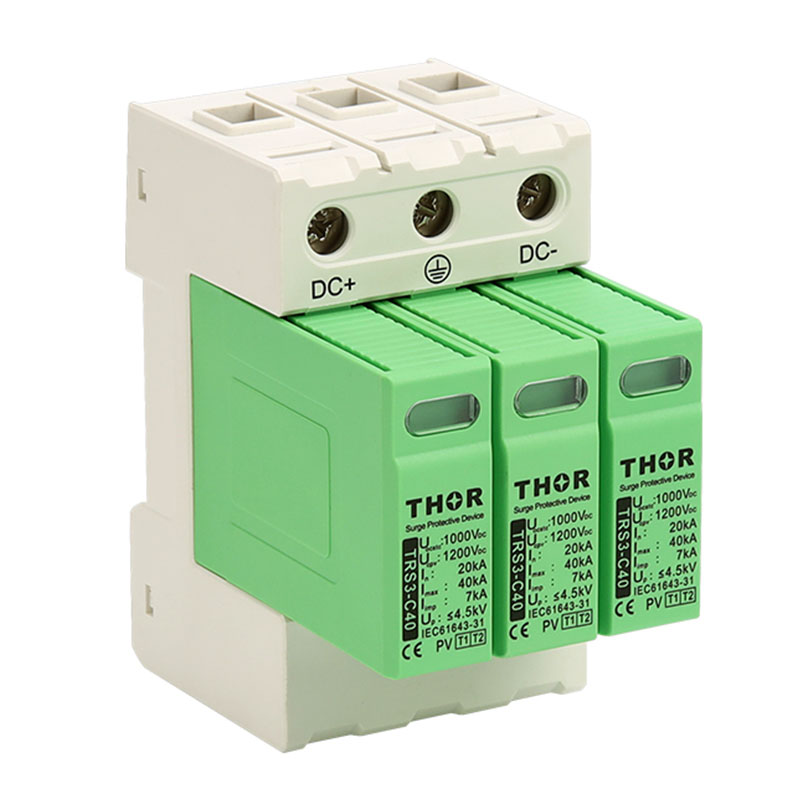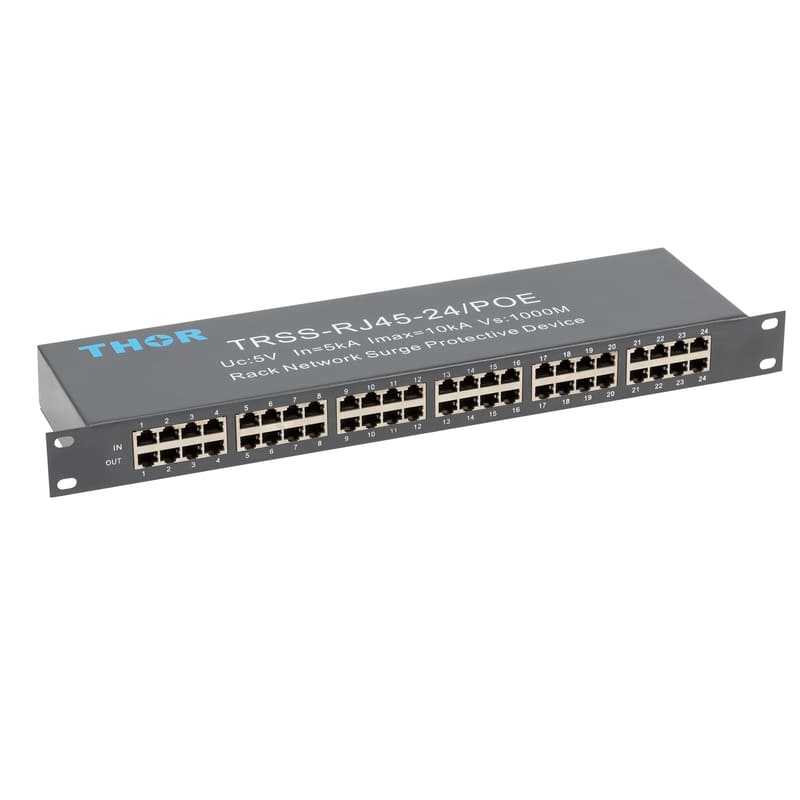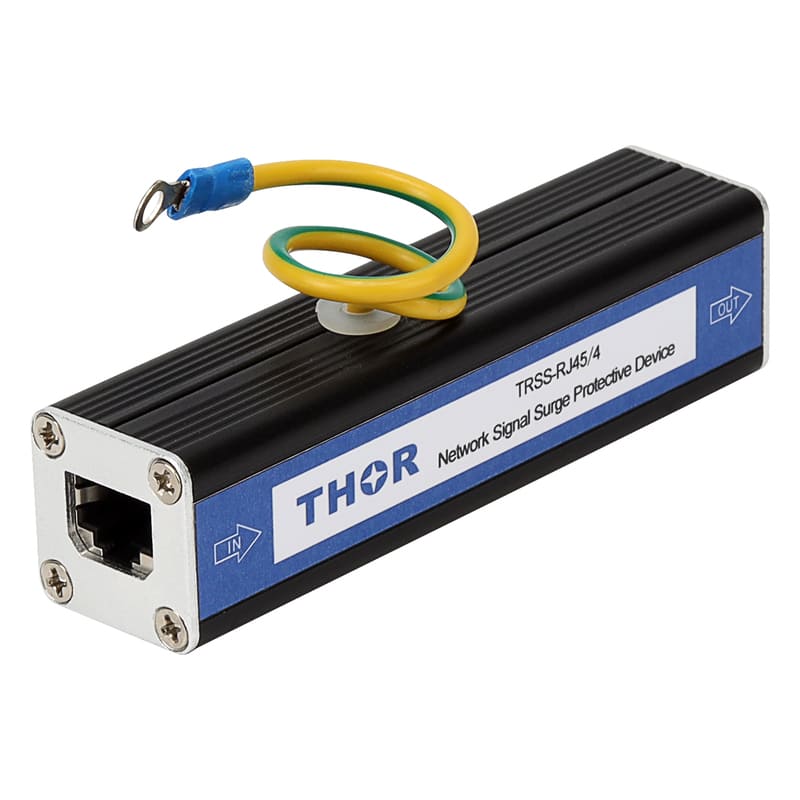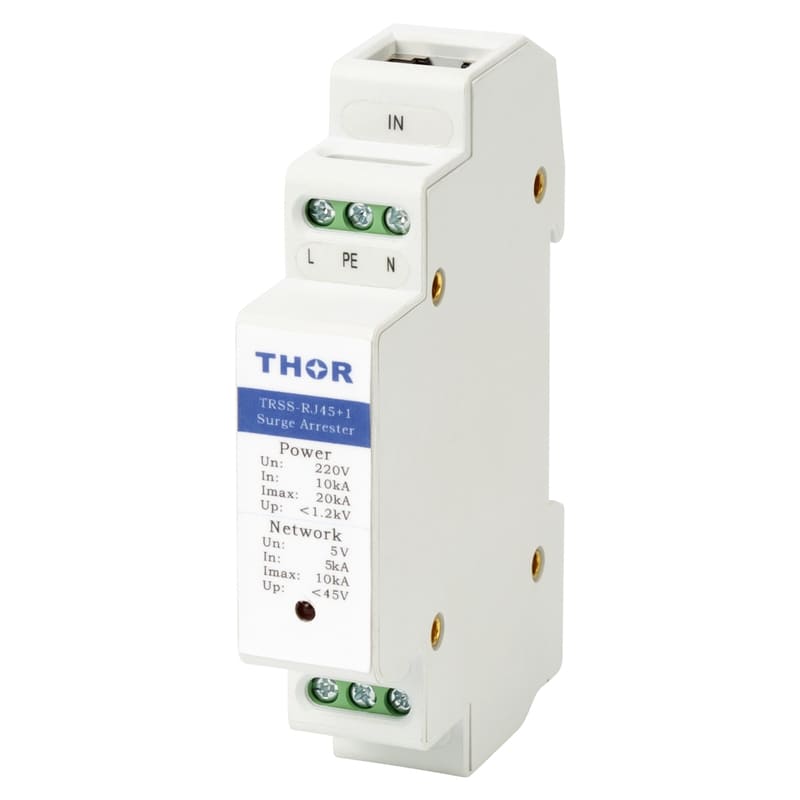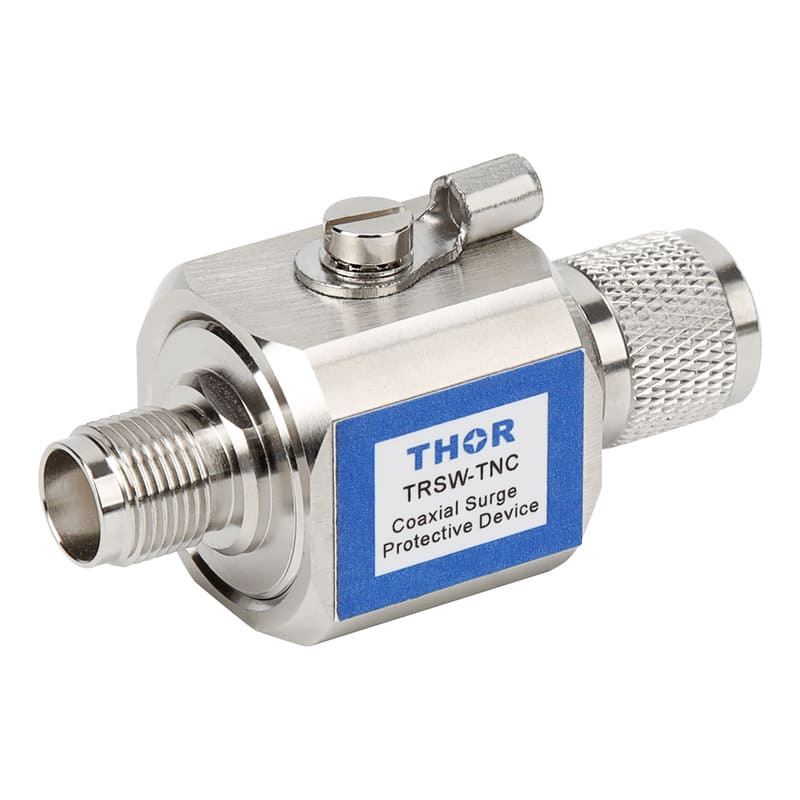What is Uc in SPD rating and the difference between MCOV and Uc?
Uc, or Maximum Continuous Operating Voltage, is a fundamental parameter in surge protective devices (SPDs). It defines the maximum root mean square (RMS) voltage that can be continuously applied to the SPD terminals without causing degradation or premature aging of its internal components, typically metal oxide varistors (MOVs).
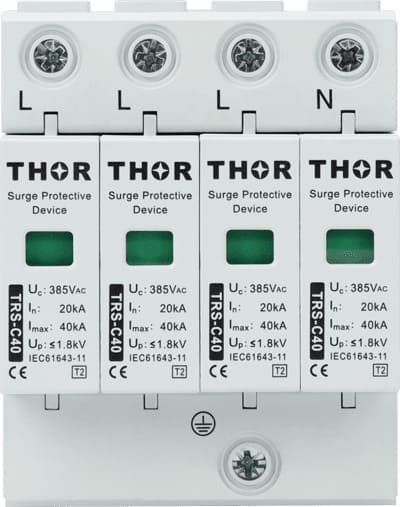
Figure 1 - 385 V Uc rated AC surge protection device
Uc is influenced by the nominal system voltage, tolerance of overvoltages in the power system, and the regulatory or standard framework in the respective country. In IEC standards (e.g., IEC 61643-11), Uc is the primary voltage rating used to define SPD applicability. In UL 1449, the equivalent parameter is referred to as MCOV (Maximum Continuous Operating Voltage), although the two terms are often used interchangeably in practice, with slight differences in testing methodology and tolerances.
SPDs are required to pass thermal stability tests at Uc to verify that they can operate continuously under worst-case voltage scenarios. The selection of an appropriate Uc value is crucial for both protective effectiveness and device longevity.
Why adopted Uc values are varied in different countries and regions (IEC, UL1449, GB)
The variation in Uc (Maximum Continuous Operating Voltage) values across countries is primarily due to differences in electrical standards, voltage system tolerances, and SPD rating practices.
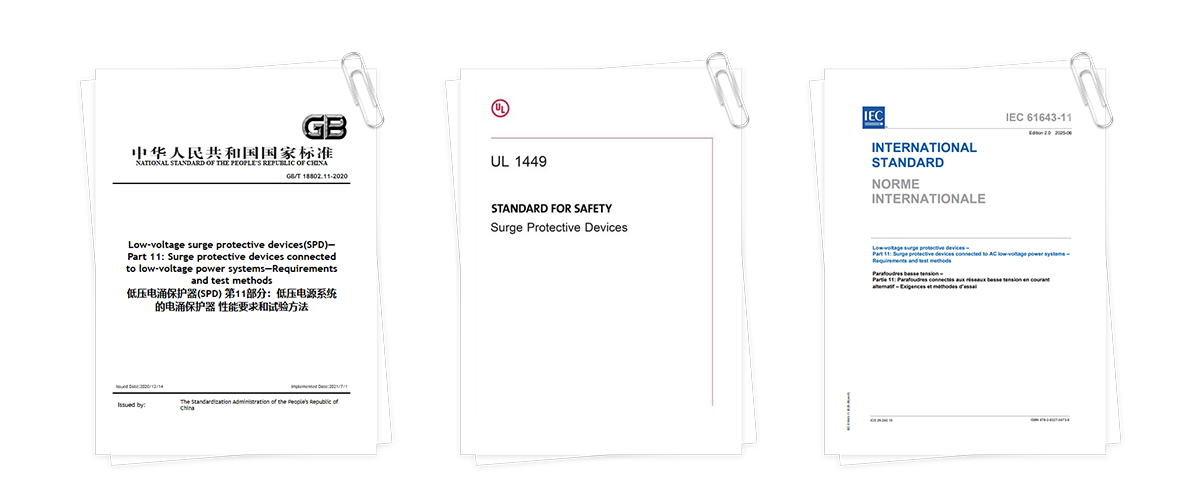
1.IEC Standard (International Electrotechnical Commission)
Under IEC 61643-11, Uc is defined as the maximum voltage a surge protective device can withstand continuously without degrading its protective performance. This standard is widely adopted across Europe, Asia, and many international markets. The Uc value selection in IEC-compliant systems often considers factors like nominal voltage, temporary overvoltage conditions, and expected surge exposure. IEC-rated SPDs typically follow 230/400V systems, and selection of Uc must ensure the device can handle temporary overvoltages (TOV) that may occur due to grid switching, harmonics, or phase imbalances.
2.UL 1449 (North American Standard)
In the U.S. and Canada, surge protective devices are tested according to UL 1449, where Uc is commonly referred to as MCOV (Maximum Continuous Operating Voltage). The MCOV rating is critical for SPD selection in low voltage surge arrester applications, especially in 120/240V split-phase and 208Y/120V three-phase systems. UL 1449 emphasizes safety and fire protection, and MCOV ratings are selected conservatively to prevent nuisance tripping and overheating. Additionally, MCOV values influence the Voltage Protection Rating (VPR), which is a key performance indicator in UL-listed products.
3.GB Standard (China National Standard)
China’s GB/T 18802.1 standard is technically aligned with IEC 61643-11 but may adapt specific parameters to suit local grid conditions and system voltages. In practice, this means that while the Uc selection principles resemble IEC’s, implementation may differ due to variations in overvoltage behavior, distribution system design, and tolerance levels in Chinese infrastructure. For example, systems with higher fault levels or more frequent switching surges may lead to SPDs with higher Uc values, tailored to domestic reliability expectations and component life cycles.
Regional impacts on surge arrester MCOV selection
Various standards lead to variation in how Uc/MCOV ratings are calculated and applied.
Such regional variability underscores the importance of understanding how to calculate MCOV of surge arrester models in context. When sizing surge arresters for global markets, product designers and specifiers must align MCOV ratings not just with nominal system voltage, but also with national regulatory frameworks and testing methodologies.
|
Standard |
Terminology Used |
Typical System Voltages |
MCOV/Uc Selection Basis |
Key Considerations |
|
IEC 61643-11 |
Uc (Maximum Continuous Operating Voltage) |
230/400V (Europe, Asia) |
Based on nominal voltage and temporary overvoltage (TOV) |
Coordination with system TOV, endurance under surge |
|
UL 1449 |
MCOV (Maximum Continuous Operating Voltage) |
120/240V, 208Y/120V (North America) |
Conservative MCOV to ensure thermal safety and VPR compliance |
Emphasis on fire safety, thermal disconnection, VPR rating |
|
GB/T 18802.1 |
Uc (aligned with IEC) |
220/380V, 230/400V (China) |
Similar to IEC with adaptation to local grid behavior |
Adjusted for local switching surges and infrastructure |
Table 1 - Differed Uc value based on different regions and standards
How to calculate/select Uc or MCOV for SPDs
Selecting the appropriate Maximum Continuous Operating Voltage (Uc or MCOV) is critical in surge arrester selection. An improperly sized surge protective device can either fail to protect sensitive equipment or degrade prematurely under continuous overvoltage stress. Below are key principles and calculations used to determine the correct Uc value for SPDs, particularly for metal oxide varistor (MOV)-based lightning and low voltage surge arresters.
To ensure surge protective devices (SPDs) operate reliably without nuisance tripping or premature degradation, IEC 60364-5-53 (Clause 534) provides detailed guidance for calculating the minimum required Uc based on the earthing system and connection point of the SPD. This information is presented in Table 534.2.
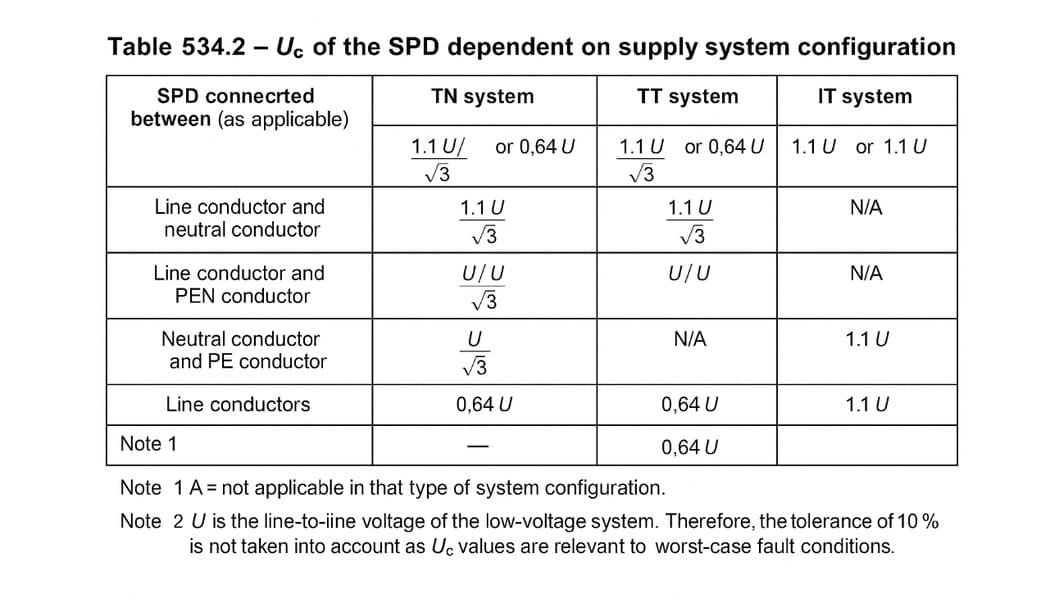
Table 534.2 from IEC 60364-5-53 on Uc of the SPD dependent on supply system configuration
According to IEC 60364-5-53 Table 534.2, the minimum continuous operating voltage (Uc) for a surge protective device (SPD) is calculated based on the system configuration and where the SPD is installed. The standard sets specific formulas—typically using expressions of 1.1 × U / √3 or 0.64 × U, with U representing the line-to-line voltage. This method introduces a built-in safety margin above the phase-to-neutral voltage (Un) to account for temporary overvoltages (TOVs).
In practical applications, these requirements are commonly simplified to Uc ≥ 1.15 × Un for TN and IT systems, and Uc ≥ 1.55 × Un for TT systems. The higher coefficient for TT systems reflects a greater risk of TOVs due to local earthing conditions and the absence of a direct connection between neutral and earth.
For instance, in a 230V system, 1.15 × 230V results in 264.5V, typically rounded to 275V. Similarly, 1.55 × 230V gives 356.5V, rounded to 360V or 385V.
1.Uc Must Exceed the Nominal Voltage of the Power System
The Uc (or MCOV) of a surge arrester must always be greater than or equal to the system's nominal voltage, guaranteeing surge protective device does not activate during normal operation and can reliably handle small voltage fluctuations without premature aging. For example, in a 230V nominal system, the Uc should typically be no lower than 255V.
2.Uc Should Closely Match the Maximum Continuous Line Voltage
A well-selected Uc is slightly (0–10V) above the actual maximum continuous voltage present on the protected conductor. If Uc is selected too high, the SPD may not trigger during moderate surges, thus compromising protection. If it's too low, the SPD may enter conduction mode under normal operating conditions, resulting in thermal stress and shortened lifespan.
SPDs work by clamping voltages only above their Uc rating, meaning they will not interfere with voltages below this threshold. For optimal protection, especially in sensitive electronics or industrial equipment, Uc should be chosen to match the system voltage while accounting for temporary overvoltage (TOV) events.
3.System Type and Regional Standards Affect Uc Selection
The power distribution system type—whether TT, TN, IT, or split-phase—directly affects the required Uc or MCOV rating. These differences are often amplified by regional standards such as IEC, UL 1449, or GB/T, which define different tolerances for surge levels and system behavior.
|
System Type |
Typical Nominal Voltage (U0 or Un) |
Common Regional Examples |
Recommended Minimum Uc / MCOV |
|
TT System |
220V–240V (Phase–Neutral) |
Europe, China, Australia |
≥1.55 × U₀ → Uc ≥ 341–372V (Phase–Earth); Uc ≥ 253–276V (Neutral–Earth) |
|
TN System |
220V–240V (Phase–Neutral) |
Europe, China, Middle East |
≥1.15 × U₀ → Uc ≥ 253–276V (Phase–Neutral or Neutral–Earth) |
|
IT System |
380V–415V (Line–Line) |
Industrial EU sites, medical, isolated networks |
≥1.15 × U (Line voltage) → Uc ≥ 437–477V |
|
Split-Phase |
120/240V (L–N / L–L) |
United States, Canada |
Uc ≥ 150V (L–N), ≥300V (L–L) |
Table 2 - Uc / MCOV calculation guide for common power system types
Common Uc / MCOV values and application scenarios
To simplify surge arrester selection in real-world settings, it’s important to understand how typical Uc / MCOV values correspond to different power systems, installation environments, and regional standards. Below are common MCOV ratings for SPDs and their appropriate use cases across residential, commercial, and industrial sectors.
|
Uc / MCOV Rating |
Typical Application |
System Type |
Example Regions |
|
150V |
Protection for 120V line-to-neutral circuits |
Split-phase (L–N) |
United States, Canada |
|
255V – 275V |
Residential or small office 220–240V circuits |
TN or TT (Phase–Neutral) |
Europe, Asia, Middle East |
|
320V |
Light commercial 230V systems with higher TOV risk |
TN-S / TT systems |
EU, China, Australia |
|
385V |
Standard for 230/400V or 277/480V systems with moderate surges |
TN-C / TN-C-S / IT |
Global industrial & commercial sites |
|
420V – 480V |
Heavy industrial installations, motor loads, or IT systems |
IT, TN (High TOV zones) |
Factories, critical infrastructure |
Table 3 - Common Uc / MCOV rating selection guide by system type and region
FAQs
Q1: Are Uc values standardized globally across manufacturers?
A: While common values like 275V, 320V, 385V are widely used, there’s no global enforcement of exact Uc steps. Always check the datasheet and confirm compatibility with your regional standards and system design.
Q2: Can I mix SPDs with different Uc ratings in the same panel?
A: It’s possible but not ideal. Using SPDs with different Uc values in the same protection zone may lead to uneven clamping behavior, where one device activates too early or too late. For coordinated protection, Uc values should be matched or stepped deliberately according to Type 1, 2, and 3 SPD roles.
Q3: Is it necessary to recalculate Uc when modifying the distribution board or adding new circuits?
A: Yes. When changes are made to the distribution board—such as adding new circuits, reconfiguring loads, or integrating sensitive equipment—it’s important to reassess the selected Uc value. The modifications can alter voltage stability, increase exposure to transients, or shift the protection requirements. Verifying that the SPD’s Uc remains appropriately matched maintains continued protection and avoids under- or over-specification.

